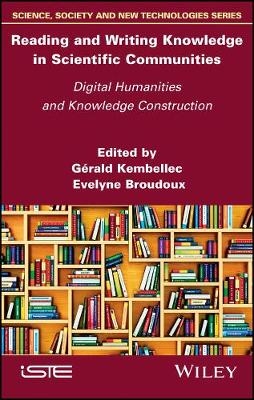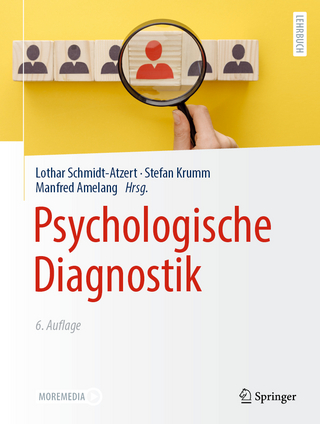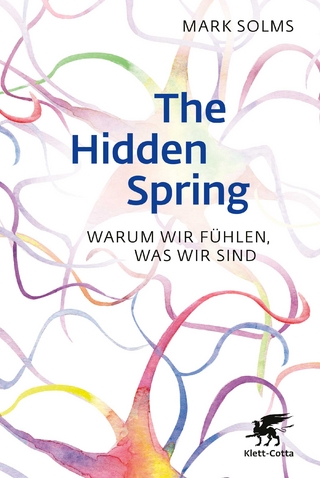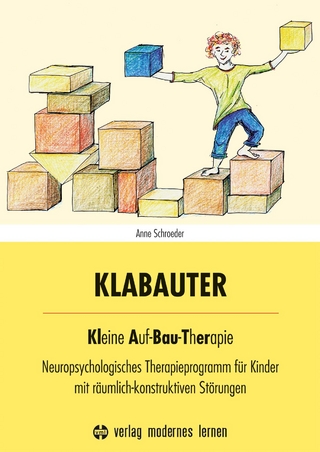
Reading and Writing Knowledge in Scientific Communities
ISTE Ltd and John Wiley & Sons Inc (Verlag)
978-1-78630-125-3 (ISBN)
Practices associated with the culture of “scholarly” reading have been developed over many centuries and annotations themselves have become the subject of study, either as additional elements in connection with the original texts or as documents in their own right.
The first “scholarly” reading techniques, seen historically from the 12th Century onwards, combine reading and writing in a process known as lettrure, involving both attentive reading and commentary. The Internet has transformed this activity, adding technical layers that relate both to the reading and writing process as well as to the circulation of texts; their potential and effective augmentation, diffusion, and reception.
This book examines digitized reading and writing by focusing primarily on the conditions for the co-construction of scientific knowledge and its augmentation. The authors present numerous examples of studies and personal feedback concerning the intellectual process, open critical spaces, collaborative scholarly publishing, methods for the circulation and mediatization of knowledge, as well as the techniques and tools employed.
Gérald Kembellec, CNAM, France. Evelyne Broudous, CNAM, France.
Acknowledgements xi
Foreword xiii
Chapter 1 Introduction to Scientific Reading and Writing and to Technical Modalities of Augmentation 1
Evelyne BROUDOUX and Gérald KEMBELLEC
1.1 Introduction 1
1.2 The digital humanities 2
1.2.1 Field of practice 2
1.2.2 A disciplinary movement 4
1.3 Notable features of reading and writing 6
1.3.1 Scientific reading and writing 6
1.3.2 Ecrilecture: a major concept in the digital humanities 9
1.4 Current hypertext technologies 12
1.4.1 From hypertext to the data web 12
1.4.2 Specific elements of scientific augmentation: examples 17
1.5 Conclusion 20
1.6 Bibliography 20
Chapter 2 Ecrilecture and the Construction of Knowledge within Professional Communities 23
Viviane CLAVIER and Céline PAGANELLI
2.1 Introduction 23
2.2 Ecrilecture and research practices: state of the art 24
2.2.1 The act of ecrilecture 24
2.2.2 Writing as a product of ecrilecture 27
2.2.3 Methodological questions and results 28
2.3 Ecrilecture: an informational activity in a professional context 30
2.3.1 An "invisible" informational practice 30
2.3.2 Ecrilecture as support for professional activities 31
2.4 Ecrilecture: production of an augmented document 32
2.4.1 Products of ecrilecture 32
2.4.2 Differences between disciplines and research aims 33
2.5 Ecrilecture: a factor in structuring and constructing knowledge 35
2.6 Conclusion 37
2.7 Bibliography 38
Chapter 3 "Critical Spaces": A Study of the Necessary Conditions for Scholarly and Multimedia Reading 43
Thomas BOTTINI
3.1 Critical positioning and operations 44
3.1.1 Writing and spatial structures 45
3.1.2 The chain of reading 46
3.2 The critical mechanism: tensions between material, meaning and space 50
3.2.1 Technical environment of criticism 50
3.2.2 Digital materiality 51
3.2.3 From document to critical space: observations and directions for design 51
3.3 Bibliography 56
Chapter 4 "Annotate the World, and Improve Humanity": Material Imageries in a Web Annotation Program 59
Marc JAHJAH
4.1 Serving of all humanity: the aims and claims of Hypothes.is 60
4.1.1 The political implications of "information" 60
4.1.2 Mythologies, ideologies and primitive foundation scenes: from the circle to the network and from the network to the world 63
4.1.3 Provisional assessment: same ideological basis, different positions 66
4.2 Materialized and imaginary visions reformulated through software 67
4.2.1 Frameworks, signs and actions: values present in the program 67
4.2.2 Border and visuals 74
4.3 Conclusion 75
4.4 Bibliography 75
Chapter 5 Construction of Ecrilecture Standards for Collaborative Transcription of Digitized Heritage 79
Lisa CHUPIN
5.1 Introduction 79
5.2 Participatory enrichment of digitized collections: institutional regulation and community ecrilecture practices 80
5.2.1 Regulation of ecrilecture approaches and institutional criteria 80
5.2.2 Atomized and community approaches to ecrilecture 82
5.3 Providing Internet users with the means for scientific ecrilecture 83
5.3.1 The herbarium as a means of ecrilecture 83
5.3.2 The diversity of ecrilecture tools and the emergence of transcription communities 84
5.3.3 Writing on "Les Herbonautes" 85
5.4 Associating human and algorithmic ecrilecture by aggregating concordant transcriptions 86
5.4.1 Production of standardized transcriptions and algorithmic validation of concordances 86
5.4.2 Transcription by simple replication: a dominant practice 88
5.5 The role of forums in the production of concordant data 88
5.5.1 Learning the rules for writing a scientific document and the development of transcription conventions 88
5.5.2 Justified and concerted transcription decisions 90
5.6 Re-editorializing transcription traces: consultation of community archives 92
5.6.1 Production of non-standardized information in discussion spaces 92
5.6.2 Perspectives for re-editorializing comments 92
5.7 Conclusion 93
5.8 Bibliography 94
Chapter 6 The Challenge of Platform Interoperability in Constructing Augmented Knowledge in the Humanities and Social Sciences 97
Camille PRIME-CLAVERIE and Annaïg MAHÉ
6.1 Introduction 97
6.2 Interoperability models for the circulation of documentary metadata 98
6.3 Focus and methodology 101
6.4 Different levels of interoperability 103
6.4.1 Organizational interoperability 103
6.4.2 Technical interoperability 106
6.4.3 Semantic interoperability 109
6.5 Integration and enrichment of metadata in Isidore 111
6.6 Conclusion 112
6.7 Bibliography 113
Chapter 7 The XML Portal for the symogih.org Project 115
Francesco BERETTA and Rosemonde LETRICOT
7.1 Introduction 115
7.2 The symogih.org project and the interoperability of geohistorical data 117
7.2.1 Collaborative management of geohistorical data 117
7.2.2 From generic relational model to interoperable ontology 119
7.3 Editorialization procedures 122
7.3.1 Platform architecture and text annotation 122
7.3.2 Specific aspects of the Michon and Galileo projects 125
7.3.3 Features of the XML portal 127
7.4 Discussion 130
7.5 Conclusion 132
7.6 Bibliography 132
Chapter 8 Issues of "Hypermediating Journals" for Scientific Publishing 135
Lise VERLAET and Hans DILLAERTS
8.1 Introduction 135
8.2 Digital technology and the transformation of scientific journals 137
8.3 The concept of hypermediating journals: the COSSI case 142
8.4 The role of the tagger in the ecrilecture process 148
8.5 Conclusion 150
8.6 Bibliography 152
List of Authors 157
Index 159
| Erscheinungsdatum | 21.07.2017 |
|---|---|
| Verlagsort | London |
| Sprache | englisch |
| Maße | 160 x 236 mm |
| Gewicht | 340 g |
| Themenwelt | Geisteswissenschaften ► Psychologie |
| Naturwissenschaften | |
| Sozialwissenschaften | |
| ISBN-10 | 1-78630-125-3 / 1786301253 |
| ISBN-13 | 978-1-78630-125-3 / 9781786301253 |
| Zustand | Neuware |
| Haben Sie eine Frage zum Produkt? |
aus dem Bereich


